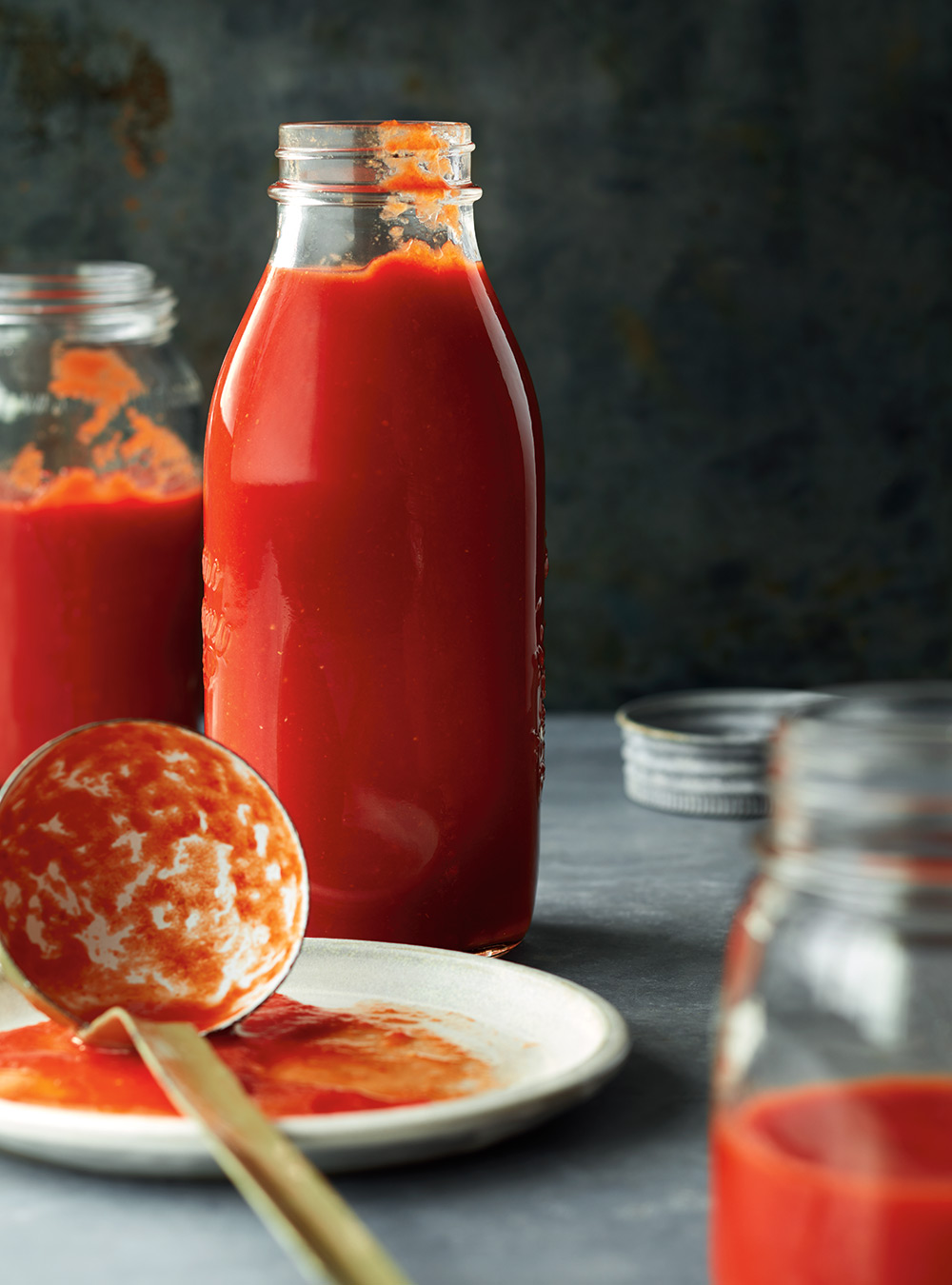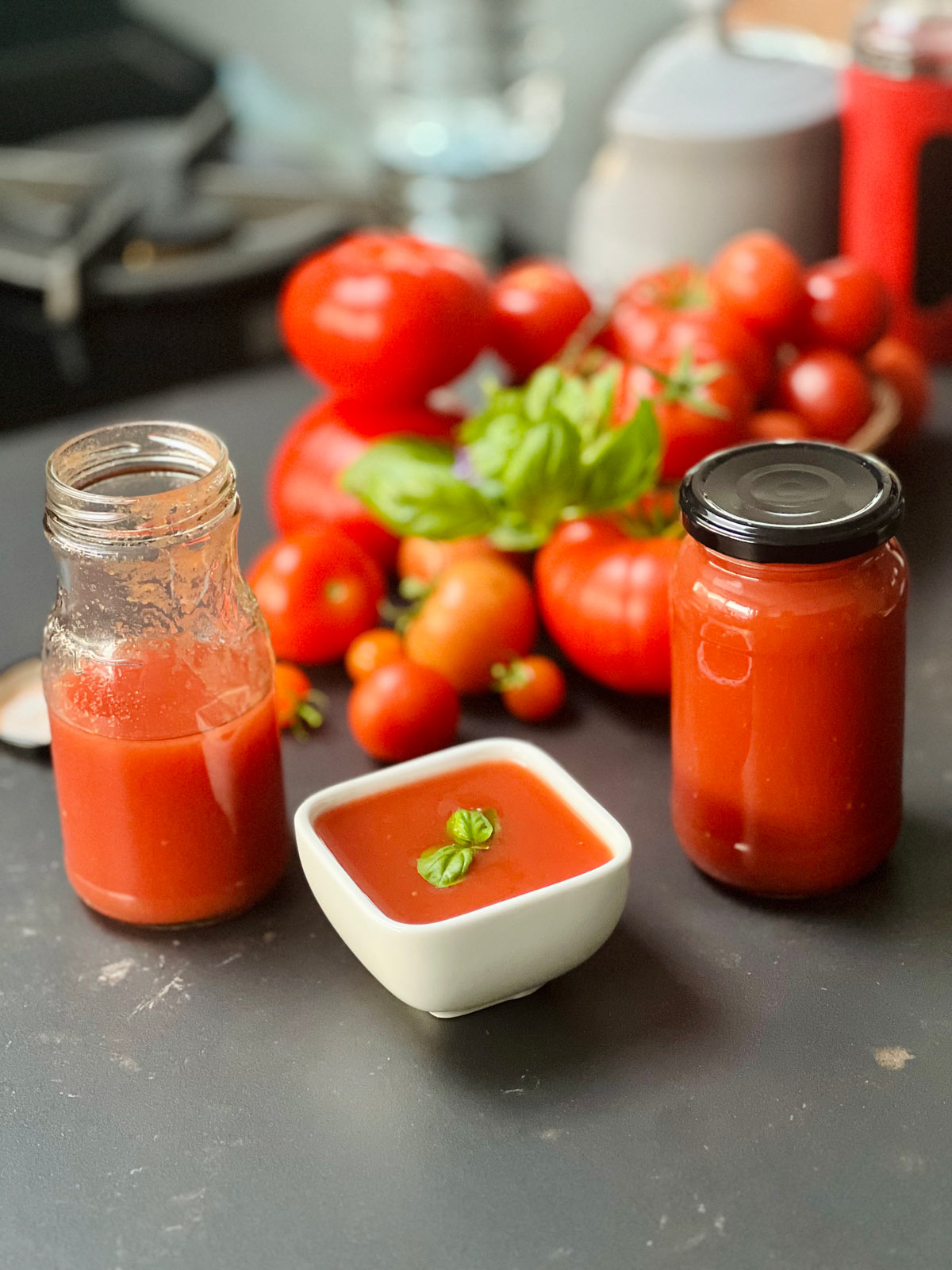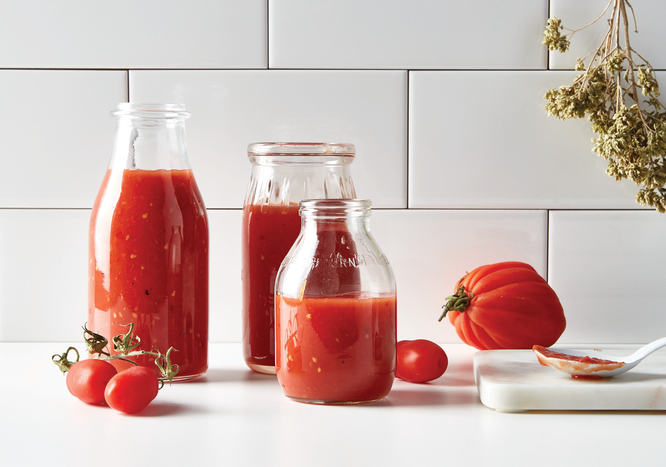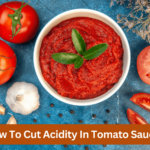Tomato passata is a staple in Italian cuisine, cherished for its rich flavor and versatility in various dishes. Making tomato passata at home allows you to capture the freshness and essence of ripe tomatoes, ensuring a superior taste compared to store-bought alternatives. In this comprehensive guide, we will walk you through the step-by-step process of making homemade tomato passata.
What is Tomato Passata?

Tomato passata is a fundamental ingredient in Italian cuisine, revered for its simplicity and depth of flavor. Essentially, it is a smooth, strained tomato puree that serves as the foundation for numerous dishes, including pasta sauces, soups, stews, and pizzas. Unlike tomato sauce, which often contains additional ingredients like herbs, spices, and vegetables, passata is made solely from ripe tomatoes that have been cooked, strained, and bottled.
The process of making passata begins with selecting the finest, ripest tomatoes, typically Roma or San Marzano varieties, known for their rich flavor and low water content. These tomatoes are washed, cored, and cut into halves or quarters before being gently cooked to release their juices. Once softened, the tomatoes are passed through a food mill or sieve to remove the skins, seeds, and any fibrous bits, resulting in a smooth, velvety liquid.
What sets passata apart from other tomato products is its pure, concentrated tomato flavor, unadulterated by additional ingredients. This makes it incredibly versatile in cooking, allowing the natural sweetness and acidity of the tomatoes to shine through. Whether used as a base for pasta sauces, spread on pizza dough, or stirred into soups and stews, tomato passata adds depth and complexity to a wide range of dishes.
In Italian households, making tomato passata is often a cherished tradition, with families coming together to preserve the bounty of summer tomatoes for year-round enjoyment. It is not just a culinary technique but also a cultural practice, passed down through generations and celebrated for its simplicity and purity. Ultimately, tomato passata embodies the essence of Italian cooking – simple, vibrant, and deeply flavorful.
Importance of Homemade Tomato Passata
Homemade tomato passata offers several advantages over commercially produced versions. Firstly, it allows you to control the quality and freshness of the ingredients, ensuring a superior taste. Additionally, making passata at home provides a sense of tradition and connection to Italian culinary heritage.
Ingredients

Before we dive into the process of making tomato passata, let’s gather the necessary ingredients:
5 kg Ripened Roma tomatoes: Roma tomatoes are preferred for making passata due to their meaty texture and rich flavor. This quantity will yield a substantial amount of passata, perfect for preserving and enjoying throughout the year.
1 Red or Green bell pepper (capsicum): The addition of a bell pepper adds depth of flavor and sweetness to the passata. Choose either red or green based on personal preference or availability.
Extra virgin olive oil (EVOO): High-quality extra virgin olive oil enhances the taste and aroma of the passata. Approximately 2 tablespoons are required for seasoning and sealing the passata bottles.
2 tbsp Rock salt: Rock salt, or coarse salt, is used to season the passata. The quantity can be adjusted according to taste preferences, but approximately 2 tablespoons are recommended for a batch of passata made from 5 kg of tomatoes.
Fresh basil leaves: Basil leaves add a refreshing herbal note to the passata. While the exact quantity may vary based on personal preference, a handful of fresh basil leaves will suffice for seasoning and layering in the passata bottles.
Equipment

Sharp knife: A sharp knife is essential for cutting and preparing the tomatoes, as well as slicing the bell pepper and any other ingredients.
Large pot: A large pot is needed for cooking the tomatoes and bell pepper mixture. Choose a pot that can comfortably accommodate the volume of ingredients without overcrowding.
Extra Large bowl or 2 large bowls: These bowls are used for various purposes throughout the process, such as washing the tomatoes, straining the cooked mixture, and collecting the passata.
1-2 Colanders: Colanders are indispensable for straining the cooked tomato mixture, separating the liquid from the pulp.
3-4 Glass bottles (sterilized) + lids to seal: Glass bottles are used for storing the homemade passata. Ensure they are sterilized before use to maintain the freshness and safety of the passata. Lids are necessary for sealing the bottles securely.
Kitchen funnel: A kitchen funnel facilitates the transfer of passata from the pot into the bottles, minimizing spills and mess.
Ricer utensil or Rotary Food/Vegetable Mill: A ricer utensil or rotary food mill is used to process the cooked tomato mixture, separating the skin from the flesh and creating a smooth passata.
Ladle or Large spoon: A ladle or large spoon is handy for scooping and transferring the passata into the bottles.
Tongs: Tongs are useful for handling hot bottles during the sealing process, ensuring safety and preventing burns.
Step-by-Step Instructions

1.Prepare the Tomatoes
- Wash the tomatoes: Thoroughly rinse the tomatoes under cold water to remove any dirt or debris. This step ensures that your passata is clean and free from contaminants.
- Remove stems and bruised parts: Use a sharp knife to cut off the green stems from the top of each tomato. Additionally, remove any bruised or blackened parts to ensure that only the ripest portions are used in the passata.
- Cut the tomatoes: Once cleaned and trimmed, cut the tomatoes in half lengthwise. This not only makes them easier to handle but also helps release their juices during the cooking process.
2. Add Ingredients
- Prepare bell pepper: Cut the bell pepper in half and remove the stem and seeds. Slice the pepper into strips, which will impart flavor and sweetness to the passata.
- Mix ingredients: In a large pot, combine the halved tomatoes and sliced bell pepper strips. Using your hands, gently mix the ingredients together to ensure even distribution.
3. Cook the Tomatoes
Boil the mixture: Place the pot on the stove over medium heat and bring the tomato and bell pepper mixture to a gentle boil. Allow it to simmer for 20-25 minutes, stirring occasionally to prevent sticking and ensure even cooking.
4. Strain the Mixture
- Use a colander: Set a large colander over a mixing bowl and carefully pour the cooked tomato mixture into it. The colander will catch the solids while allowing the liquid to drain into the bowl below.
- Strain the liquid: Allow the liquid to drain completely from the tomato mixture, pressing gently with a spoon to extract as much liquid as possible. Discard the solids or reserve them for other culinary uses, such as adding to soups or composting.
5. Pass the Mixture

- Use a food mill: Pass the strained tomato mixture through a food mill or ricer utensil into a clean bowl. This step separates the skin and seeds from the pulp, resulting in a smooth and velvety passata.
- Repeat the process: Continue passing the tomato mixture through the mill until all of the pulp has been processed, leaving behind only the skin and seeds.
6. Season and Bottle the Passata
- Add salt: Season the passata with rock salt, stirring well to ensure that it is evenly distributed. Adjust the amount of salt to taste, keeping in mind that some salt will be lost during cooking and bottling.
- Prepare bottles: Sterilize glass bottles and lids by washing them in hot, soapy water and then submerging them in boiling water for several minutes. Place a few fresh basil leaves at the bottom of each bottle for added flavor.
- Fill the bottles: Using a kitchen funnel, carefully pour the passata into the sterilized bottles, leaving a small amount of headspace at the top to allow for expansion during freezing or storage.
- Seal the bottles: Drizzle a small amount of extra virgin olive oil over the surface of the passata in each bottle to create a protective seal. Secure the lids tightly to prevent air from entering the bottles.
7. Preserve the Passata
- Boil the bottles: Place the filled bottles in a large pot and cover them with water. Bring the water to a boil and allow the bottles to simmer for 20 minutes to ensure a secure seal and proper preservation of the passata.
- Cool and store: Carefully remove the bottles from the pot using tongs and allow them to cool to room temperature before storing them in a cool, dark place. Properly sealed and stored, homemade tomato passata can be kept for several months.
Conclusion
Congratulations! You have successfully made homemade tomato passata. Whether you use it as a base for pasta sauces, soups, or other Italian dishes, your passata will enhance the flavor and authenticity of your recipes. Enjoy the fruits of your labor and share the joy of homemade passata with family and friends. Buon appetito!





